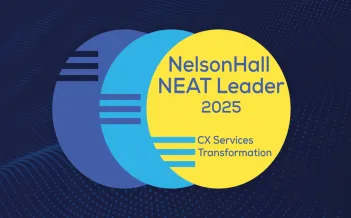After partnering with organizations across diverse industries to lead customer experience (CX) transformations, one insight has become crystal clear: no two CX journeys are the same. Different sectors, metrics, and customer profiles may shape the execution, but one consistent truth emerges across the board: traditional approaches are no longer keeping up with the expectations of today’s hyper-connected, personalization-hungry customers.
We’re not just hearing about the AI future anymore; we’re living it. Agentic AI is no longer a theory; it’s active, it’s live, and it’s rapidly reshaping the CX landscape. Its ability to autonomously observe, decide, and act represents a major leap from assisted automation to intelligent orchestration.
But here’s the cautionary tale: Agentic AI isn’t a silver bullet. Simply adding it to outdated customer journeys or legacy workflows doesn’t solve the experience gap. We've observed this approach in practice and seen it fall short. We've seen it fail. Why? Because modern CX transformation requires more than a technology upgrade, it calls for a fundamental shift in mindset.
Empathy Is Not an Add-On—It’s the Core
In the rush to digitize and automate, it's tempting to treat empathy as an afterthought, a sticky note on a whiteboard, or a line item in a design sprint. But that’s a missed opportunity. True customer experience transformation starts not with the question, “How do we optimize workflows?” but with a more human one: “How do we enrich meaningful moments?”
Empathy must become the default lens through which all interactions, digital or human, are designed. That’s where Agentic AI finds its true potential: not as a replacement for human connection, but as a powerful enabler of context-aware, empathetic interactions at scale.
The Myth of “Agentic in a Box”
Too often, enterprises are pitched ready-made “agentic” solutions. But CX isn’t one-size-fits-all. Different brands operate with varying customer intents, regulatory pressures, and workforce maturity. What works in one context may cause friction in another.
Agentic success lies in tailored autonomy, where systems are trained not just to act, but to understand when not to automate, when to pause, elevate, or hand off to a human. That nuance is where real transformation happens.
Enter the UnBPO™ CX Framework: AI-First, Human-Centric
This insight has led us to develop the UnBPO™ CX Framework—a departure from traditional Business Process Outsourcing models. Rather than legacy BPO thinking, this operating model prioritizes AI-first delivery while maintaining integrity, agility, and empathy at its core."
The framework is anchored on three core pillars:
Experience-Led Design with Intent at the Core
Agentic CX begins by understanding why a customer is engaging, not just what they need. This pillar emphasizes intent-driven journey mapping and persona-led redesign. It’s a shift from solving tickets to designing moments that matter, where every AI or human interaction is guided by empathy and purpose.
Intelligent Orchestration and Human Augmentation
Rather than deploying disconnected automation tools, this pillar ensures real-time orchestration powered by agentic systems. These systems not only observe and decide but also act alongside human agents, turning every touchpoint into a supercharged engagement. Think of copilots for your frontline, not replacements, but reinforcements.
Continuous Intelligence and Trust-by-Design
Every customer interaction becomes a source of insight. From emotion and intent to channel preference and service outcomes, continuous intelligence loops refine both human and AI behaviors. But intelligence alone isn’t enough; it must be coupled with trust. That’s why we embed explainability, compliance, and human fallback mechanisms at every level.
The Future: Scalable, Adaptive, Empathic
Together, these pillars support a location-agnostic, AI-native CX operating model that is scalable, change-resilient, and centered on measurable outcomes. But more importantly, they ensure that technology doesn’t drown out humanity.
The best Agentic AI doesn’t seek to dominate. It seeks to understand its limits. It knows when to act and when to hand off, empowering human agents to step in at the right moment, with the right context, to deliver the right outcome.
This isn’t about automation vs. empathy. It’s about autonomy with empathy, CX designed not just to be smart, but to be sensitive to the human moments that define your brand.
Conclusion
Agentic AI is here, and it’s powerful. But its true promise lies in how we choose to use it. Will we build merely efficient systems? Or will we create experiences that are intelligent and deeply human?
CX transformation in the agentic era isn’t about replacing people, it’s about amplifying them. That’s the future we’re building. The journey begins with understanding how these principles can transform your specific customer experience challenges.










